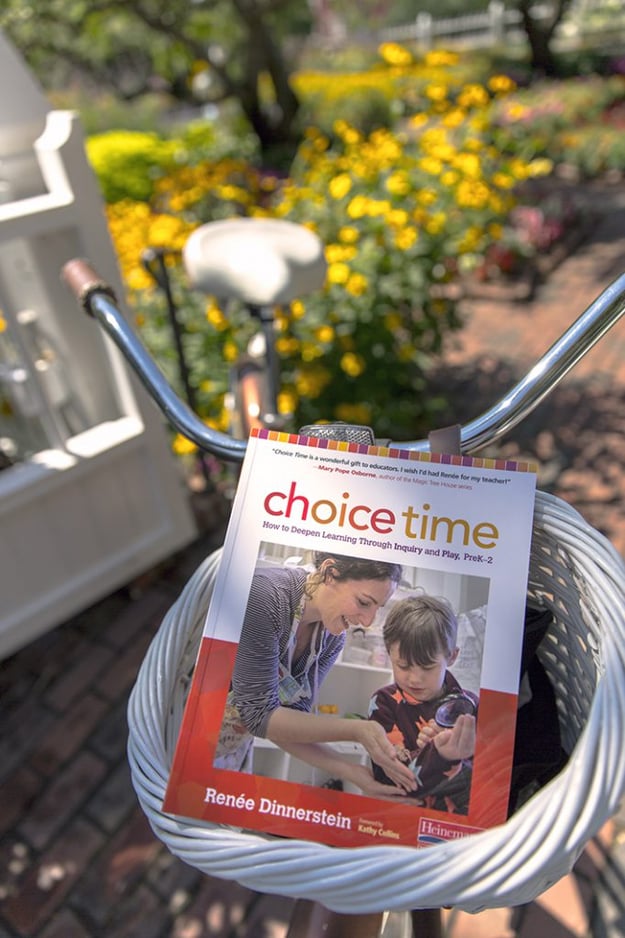Early childhood educators have always understood the importance of play—in all its many forms—in the lives of their students. Free play is spontaneous and filled with make-believe as children pursue the fantasies of their unencumbered imaginations. A twig becomes the sword of a swashbuckling pirate, or a piece of flowing fabric is transformed into a superhero’s cape or the gown of a fairy princess. Free play is entirely child directed and free of adult intervention. Guided play takes place in a purposeful environment that’s been carefully planned to stimulate and support children’s curiosity and creativity. As students interact with one another and the materials, teachers observe, record, confer, occasionally participate, or facilitate, and they use this information to plan next steps. However, the children decide how they will explore and interact with the materials, not the teachers.
In Renée Dinnerstein's book, Choice Time, she goes further into two the main types of play, but focuses on mainly on the implementation of inquiry-based, guided play in the classroom. She discusses the importance of play in the classroom in the video below:
"During choice time, children choose to play in a variety of centers around the room. Each center has been carefully designed and equipped to support play and inquiry that will nurture children’s growth and development. The materials and activities in each center change over time in response to students’ needs and interests and the academic focus of the curriculum. Examples of common centers are dramatic play, art, science, math, building (blocks and Legos), and music."
 Renée Dinnerstein (@RDinnerstein) has almost 50 years experience as an early childhood educator, teaching in both Italy and in the United States. She is a past member of the Teachers’ College Reading and Writing Project Early Childhood Reading ‘think tank’, and has worked as an Early Childhood Staff Developer in the New York City Department of Education, where she helped write the New York City Pre-Kindergarten Standards. Visit her online at investigatingchoicetime.com.
Renée Dinnerstein (@RDinnerstein) has almost 50 years experience as an early childhood educator, teaching in both Italy and in the United States. She is a past member of the Teachers’ College Reading and Writing Project Early Childhood Reading ‘think tank’, and has worked as an Early Childhood Staff Developer in the New York City Department of Education, where she helped write the New York City Pre-Kindergarten Standards. Visit her online at investigatingchoicetime.com.
To learn more about Choice Time, and to download a sample chapter from the book, please click here.



